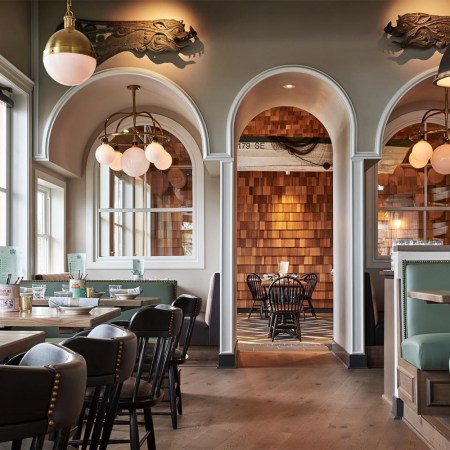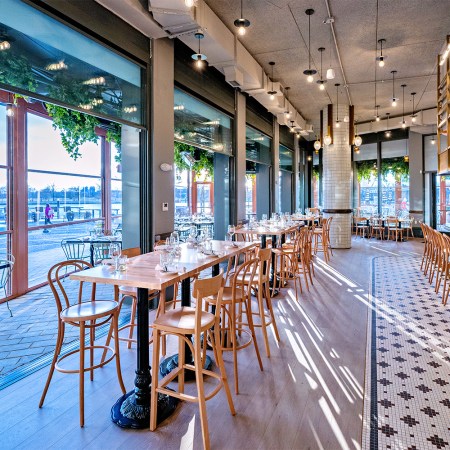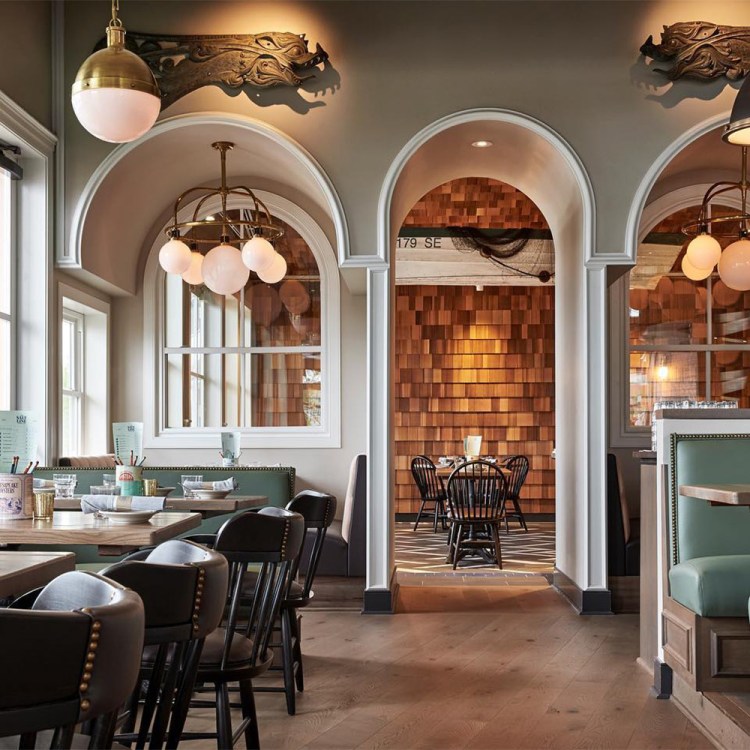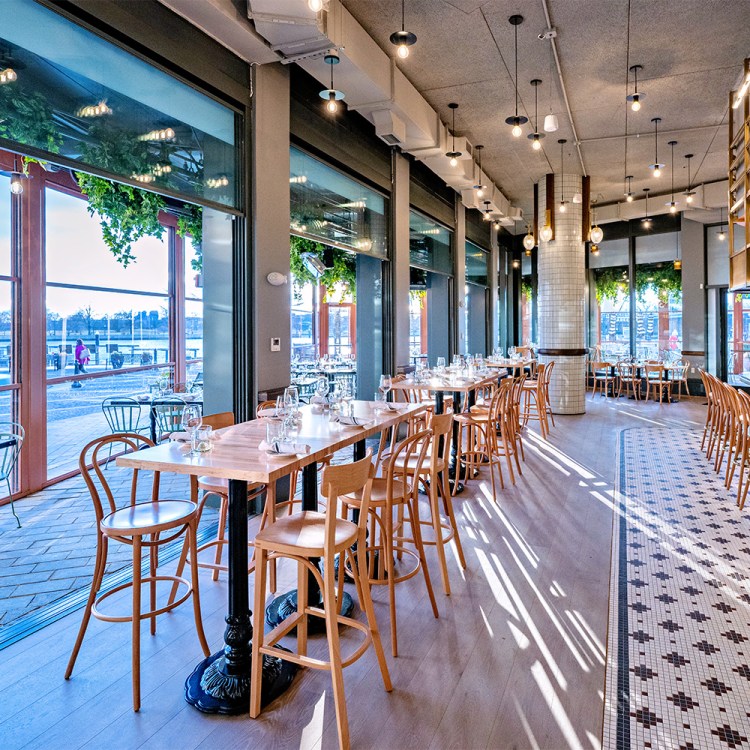No, you’re not imagining things: Prix fixe dining is definitely on the rise in D.C., with multi-course menus supplanting the once-omnipresent shared small plates. Navy Yard’s Levantine Albi transitioned to a set menu back in July, as did pan-Latin Seven Reasons. The Dabney reopened post-pandemic with just a handful of choices for each of the four courses in its prix fixe, with plans to up the ante to a six-course, no-choice tasting menu at the end of the summer.
As for why this format, once relegated to Mother’s Day or New Year’s Eve, has suddenly become so widespread, several elements are at play.
Supply chain issues are undeniably a major motivation, with shortages linked to COVID, inflation and reduced staffing forcing restaurants to contend with rising costs and the unavailability of staples ranging from mustard and cherry tomatoes to meat and plastic straws. And while according to Open Table, restaurants who source locally suffer less than bigger chains, delays do impact even farm-to-table establishments.
“I’ve had a new combi oven on order for seven months now,” says Jeremiah Langhorne, chef and co-owner of the Dabney. “They had some supply chain issue with the microchip, and because of that, our oven was delayed by three months. So there’s just so many weird little things that pop in and pop up now that didn’t used to be a part of the equation.”
To deal with the uncertainty, according to Langhorne, “smart restaurateurs will change their model” — and a tasting menu is one way to do just that. With just seven or eight dishes on offer each night as opposed to 15 or 20, there are fewer risks of random shortages — and thus disappointed diners.
But supply chains are not the only factor contributing to the evolution of menu formats in D.C.; financial concerns have their part to play.
“You might have a table that just comes in and says, ‘I’ll just take one appetizer and that’s it,’” Langhorne explains. A $95 fixed menu, like the one at Albi, or a $150 tasting menu like the one the Dabney expects to launch later this year, make the revenue per cover easier to predict.
But perhaps the most important factor contributing to this change is a desire among chefs for more control over diners’ experience, a trend that predates the pandemic. When Rooster & Owl opened back in 2019, it was with a four-course tasting menu. Rob Rubba’s Oyster Oyster was always meant to serve a tasting menu, and while that plan was scrapped in favor of a takeout launch due to the pandemic, the oystertarian restaurant has since reverted back to the nine-course plan.
For Langhorne, the Dabney’s transition is not so much a change as it is an evolution.
“The idea was to really lock in what we believed was the ideal way to eat at the Dabney in the first place,” he says, noting that the new prix fixe will include a few snacks, two to three plated courses, a large family style dish, a pre-dessert and a dessert.
“It was kind of the way we had always recommended that people operate,” he says, noting that not only can he now curate diners’ experiences, but stress on staff is considerably reduced.
The same workforce issues affecting the supply chain, after all, have also taken their toll on restaurants, with the industry still down 750,000 jobs from pre-pandemic levels, CNBC reports. Keeping the menu small makes the work more manageable for front- and back-of-house alike.
“In an à la carte version or even the version we have right now, where there could be four or five different protein courses that are being cooked over the hearth, the workload’s heavier; the stress is heavier,” says Langhorne. “We’re just giving ourselves the opportunity to really nail things down as best we can and give our staff a level of consistency that allows them to focus on their craft as well.”
To that end, the team is also paring back the dining room, reducing seats and estimating that nightly covers will fall from an average of 120 to just 60.
“The food is gonna become more complex as well,” says Langhorne, “but I think there’s a difference between that kind of work and then just the hustle that comes from doing more volume.”
This trend is likely to only grow, with Langhorne predicting a polarization in the works. It’s only natural, he says, following a decade of former fine dining chefs drawn, like he was, to a more casual atmosphere (with a cheaper menu), albeit still with the same high-level wine and cuisine.
“We all kind of pushed ourselves to provide this package at a much cheaper price than historically it’s been,” he says.
While this trend has given way to some phenomenal restaurants across the country, the pandemic has also shown people that the format just isn’t sustainable.
“Not just from a business and fiscal point of view,” according to Langhorne, “but also from an employees’ point of view, from our point of view, from an emotional point of view, from an excitement point of view, from everything.”
In the next few years, he predicts that restaurants will skew one way or the other: high-priced fine dining, or even more casual.
“And that middle-of-the-road piece I think will probably continue to fade,” he says. “At least, that’s kind of the way that I’m looking for the future.”
This article was featured in the InsideHook DC newsletter. Sign up now for more from the Beltway.






















